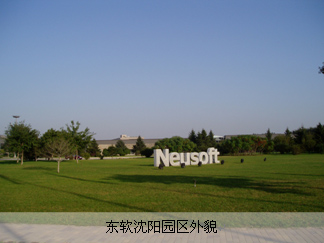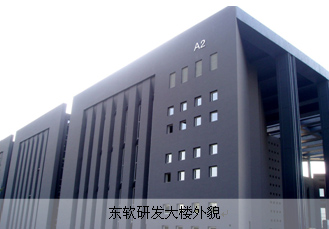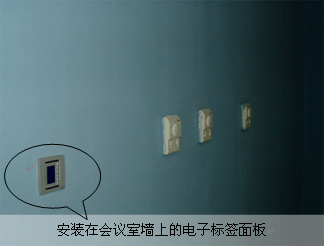I. Project introduction 3, the bathroom 4. Meeting room Third, the system design structure and advantages Fourth, compared with the traditional control method 1. The use of lamps in the entire building Editor: China Lighting Network Liu Li 
Shenyang Neusoft R&D Building is located in the Neusoft Shenyang Park in the Weinan Industrial Zone of Shenyang City. It started construction in 2004. It is a multi-functional office building invested by Neusoft Group Co., Ltd., which integrates basic research, product development and technical training. The building is divided into a basement and four floors above ground, covering an area of ​​about 12,000 square meters. Its main functional area has 40 large space offices of 400-500 square meters and other small and medium-sized offices and training rooms. More than 40 meeting rooms, bathrooms and some public areas.
As a modern energy-saving office building, the requirements for lighting are getting higher and higher. It is not only required to provide comfortable and sufficient lighting to meet the requirements of daily work, but also to meet the green and energy-saving social requirements.
Especially for large-scale office areas such as Neusoft R&D Building, software programmers have long working hours, often because some employees work overtime, and there are a lot of waste caused by the phenomenon of common lights. Traditional lighting control is very cumbersome for the above requirements. It is difficult to achieve good management. At the same time, due to long working hours and unfixed overtime work, the phenomenon of air conditioning and air conditioning in summer will also cause huge waste. The use of intelligent lighting control system can solve the above problems well.  It can be seen from the above that the energy consumption of lighting and air conditioning accounts for a high proportion of building energy consumption, so energy conservation for these two parts will be a very effective energy saving method.
It can be seen from the above that the energy consumption of lighting and air conditioning accounts for a high proportion of building energy consumption, so energy conservation for these two parts will be a very effective energy saving method.
HDL-BUS intelligent lighting control system uses the main control, sub-control, timing, brightness monitoring and infrared sensing to automatically control the lighting and air-conditioning fan coil switch for different areas of the building and different lighting areas for use; reduce personnel management Inadvertent waste of lighting and air conditioning, saving energy and human resources; maximizing the energy consumption of lighting and air conditioning while fully meeting the requirements of use, while also enhancing the flexibility and reliability of control.
Guangzhou Hedong Electronics Co., Ltd. is designed to use intelligent lighting control systems to complete the control of lighting, large-area office air-conditioning fan coils in offices, training rooms, conference rooms, bathrooms and some public areas, and to provide open interfaces for third-party systems. integrated.
Second, the specific control implementation method
Large area office 
In the lighting area, large-area offices are equipped with separate control, total control room control, timing control, brightness and infrared sensing control. In the general control room, the operator can easily turn on or off the illumination of all areas at the same time through the master control switch, or individually control the switch of a certain loop. A brightness sensor is installed near the window, and the system makes full use of the natural light immersed in the glass to achieve automatic compensation for sunlight. When the weather is gloomy or the night falls, the lights next to the windows will automatically turn on; when the weather is sunny outside, the system will automatically turn off the lights next to the windows. In addition, infrared sensors are installed in all large offices.
The air conditioner shares the infrared sensor with the lighting control system, and the power switch of the air conditioner thermostat is cut off by the smart relay. When the relay turns on the thermostat power, the temperature can be set according to the conventional method, when the infrared sensor senses no one. When the relay disconnects the thermostat power, the chilled water valve and the vent coil motor are turned off.
For large-scale offices, it can achieve the automatic control of "people come to light, people go out of the lights; people come to air-conditioning, people take air-conditioning off". For example, when the work is finished at 6 o'clock, the infrared sensor is activated, and the area light is on (the air conditioner is turned on), and the unmanned area light is off (the air conditioner is automatically turned off) to achieve automatic control and energy saving.  2. Public area corridors, stairs, elevator halls
2. Public area corridors, stairs, elevator halls
Energy savings through clock timers, intelligent on/off and displacement sensing control saves about 30% of energy while extending lamp life.
According to the needs of use, it can be divided into all kinds of lighting scenes such as full opening, 2/3 lighting opening, 1/3 lighting opening, zone opening, all closing, emergency lighting, security inspection and so on.
In the process of switching the lighting scene, the time is automatically run according to the time set by the timer, and the lighting scene can be manually switched temporarily.
For example: 2/3 lamps are turned on between 6:30-11:30 in the evening, and only 1/3 of the basic lighting is reserved after 11:30. At this time, the shielded displacement sensor starts working, and when someone passes, the corresponding one is turned on. Lighting can ensure adequate lighting for good health.
According to the time and human body infrared sensing control, when the system is not in normal time, the system opens part of the circuit to provide basic illumination. When someone enters, the area of ​​the area can be brightened as a whole, and the time delay is closed after the person leaves, and the delay time is adjustable.
Set the panel in the entrance or cleaning work room, set the manual switch mode such as full open, full off, semi-bright.
Energy-saving through intelligent on/off and time and human body infrared sensing control, it also gives people a very novel and technological feeling, and also reflects the theme of energy saving and environmental protection.
The conference room is an important part of the office building, using smart photos  Through the dimming control of each lighting circuit, the Ming control system can design a variety of lighting scenes in advance, so that the conference room can have different suitable lighting effects in different use occasions, and an electronic label panel is arranged at the door of the conference room. Staff can manually select or control in real time as needed.
Through the dimming control of each lighting circuit, the Ming control system can design a variety of lighting scenes in advance, so that the conference room can have different suitable lighting effects in different use occasions, and an electronic label panel is arranged at the door of the conference room. Staff can manually select or control in real time as needed.
Control requirements - meeting room lighting ring mirror to meet the needs of meetings, projections, chairman speech, cleaning, etc., according to the progress of the meeting can establish different event response mode, such as the chairman's speech mode should highlight the image of the speaker, the podium The lighting is between 90% and 100%, so as not to affect the speaker's feelings. The audience is mainly 50%-60% of the brightness of the audience, which is convenient for the participants to record.
In the projection mode, the light in front of the projection screen is turned off, and only the brightness of the position where the person is located is 50%; the audience seat is gradually brightened from the front row to the rear, and the light slot is turned on 50%.
Conference mode All lights are on, 90%-100% brightness.
In the cleaning mode, the main lighting and the chandelier are all turned off, leaving only part of the downlight as a basic lighting requirement.
1. This project adopts advanced and mature distributed lighting automatic monitoring system. Through the network system, the control devices distributed in each site are connected to jointly complete central centralized management and regional local control. Considering that the project covers a large area, the whole system is divided into eight subsystems on the control system; then it is uniformly connected to the control center through high-speed Ethernet.
2. The subsystem adopts the bus-type network topology structure, which can meet the requirements of the central monitoring and the system scale; it can reduce the fault surface and facilitate system expansion.
3. Flexible and diversified control modes: Central control, sub-control, area control, on-site control, timing control, infrared motion sensing control, brightness monitoring and control are adopted in this project.
4. The local control of the system partition is completely independent and does not interfere with each other. The operation of one partition does not affect the normal operation of other partitions and equipments; any device damage in the system does not affect the normal operation of other devices in the area; the local control of the system partition is controlled by The independent control panel operation is completed; the central monitoring function stops working without affecting the function of each partition and the operation of the equipment, and the network communication control should not be interrupted accordingly.
5. The control information of each unit in the system is stored independently, and the system will not be paralyzed due to a unit failure in the system. The stored information has the function of not losing data after stopping. When the power is restored, the system will automatically resume the working state before the power outage. The control loop is separated from the load loop and a 4-core low voltage cable is connected between the units on the bus. The working voltage is DC24V-30V, ensuring personal safety.
6. The system can realize the timing setting function with days, weeks and years as the cycle, and has the astronomical clock function. Automated management of each controlled area is implemented, and photosensitive control is implemented in an area close to the window, and an optical signal can be automatically controlled for a part of the lighting circuit near the periphery of the building.
7. The system has the characteristics and openness of distributed intelligent control, and can be seamlessly connected with building automation system, security and fire protection system, outdoor lighting system, stage lighting control system and so on.
The building used a total of 2,800 3*36W inductive fluorescent lamps, 147 2*36W inductive brackets and 3,000 x 1*13W downlights (of which more than 40 conference rooms were not included).
2, the power consumption calculation of each inductive fluorescent lamp
The power consumption of the inductance ballast of each 36W lamp is about 30% of the wattage of the light pipe. The actual power consumption of each inductor fluorescent lamp is: 36W*(1+30%)=46.8W
3. The total lighting power of the building
3*46.8*2800+2*46.8*147+13*3000=445,879W≈446KW
4, lighting costs per hour
The lighting power per hour is: 446KW*1h=446 degrees
The average electricity per kilowatt hour is calculated as 0.8 yuan: 446 degrees * 0.8 = 356.8 yuan
5. Traditional control methods
For example, at 9 o'clock, the security personnel will advance 20-30 minutes to each department on each floor to turn on the lights. At 6 o'clock, after work, the security guards pushed 20-30 minutes to each department on each floor to turn off the lights. If there are a few people who want to work overtime, they have to turn on the lights of the entire department. This is not only time-consuming and troublesome, but also causes the lighting to be wasted for more than 2-3 hours.
6, HDL-BUS intelligent lighting control system
In the software, set 5 minutes before going to work at 9 o'clock, the light is automatically turned on, 6 points past 5 minutes, the system infrared detector automatically monitors, some people continue to turn on the position of the overtime, the unmanned position light will automatically turn off; It saves time.
7, the average energy saving 1 hour fee
Using HDL-BUS intelligent lighting control system saves 356.8 yuan in energy saving for 1 hour.
8, monthly energy saving
Every morning before work, at noon, and after the evening, there is no time to turn off the lights, etc., and the average waste is more than 3 hours. Now it is calculated on average 3 hours a day, and it is 24 days a month. Monthly energy saving: 3*356.8*24=256.9 million
9, annual lighting energy saving 12 * 256.9 million = 308.28 million yuan
10. Total air conditioning usage of the entire building
The air-conditioning energy consumption of the building is about 800KW. It is calculated according to the annual opening of 5 months and 9 hours per day. The annual energy consumption of air-conditioning is about 800KW*9 hours*24 working days*5 months*0.8 yuan/degree=691.12 million. Through infrared sensing control, when there is no one, the air-conditioning fan coils in the corresponding area are turned off, thereby reducing the energy consumption of the chiller, thereby achieving energy saving of the air conditioner. Through the use of analysis, it is estimated that the energy saving of air conditioners can be realized by about 25%, and the annual electricity saving will be 691,200 yuan*25%, which is 172,800 yuan.
V. Investment income
In summary, after using the HDL-BUS intelligent lighting control system, the energy saving cost of the whole building is: lighting annual energy saving plus air conditioning annual energy saving: a total of 308,280 yuan + 172,800 yuan = 481,800 yuan. In addition, considering the management fees, maintenance fees, dimming and energy saving in the conference room, and extending the life of the lamps, it is expected that the investment cost will be recovered in a short period of time to achieve the goal of energy saving and wealth creation.
At the same time, the adoption of this system has improved the image of Neusoft in terms of technology, energy conservation and environmental protection; it is also in line with the country's current policy on energy conservation and environmental protection. As a listed company, it can establish the concept of energy conservation and environmental protection in the public mind. As a case study of large-scale office building energy conservation, it has great social benefits.